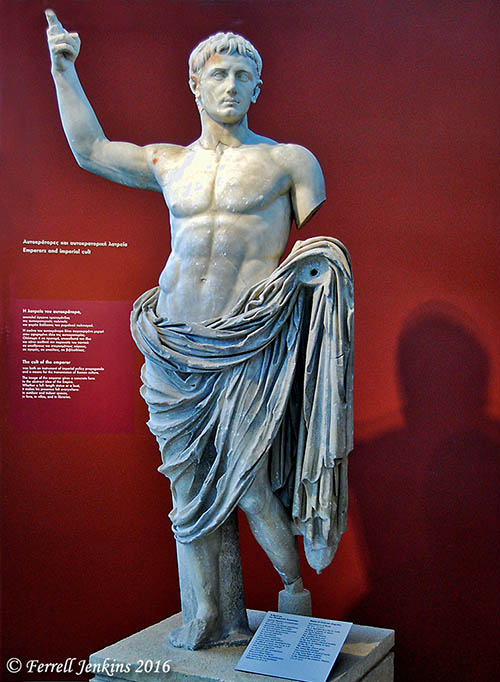Recently I was browsing through photos made in the Archaeological Museum of Thessaloniki (Salonica, Thessalonica), Greece, in 2008. I was impressed with the images of various gods and goddesses that were known in the city in the first century A.D. There were statues and busts of Egyptian gods such as Isis, Serapis, and Harpokrates/Horus. Greek gods and goddesses such as Dionysus, Hades, Apollo, Athena, Aphrodite, Demeter, and the mother of the gods often associated with Kybele (Cybele) were known. And there were others.
Immediately my mind was drawn to Paul’s commendation of the saints at Thessalonica in the middle of the first century A.D.
6 And you became imitators of us and of the Lord, for you received the word in much affliction, with the joy of the Holy Spirit,
7 so that you became an example to all the believers in Macedonia and in Achaia.
8 For not only has the word of the Lord sounded forth from you in Macedonia and Achaia, but your faith in God has gone forth everywhere, so that we need not say anything.
9 For they themselves report concerning us the kind of reception we had among you, and how you turned to God from idols to serve the living and true God,
10 and to wait for his Son from heaven, whom he raised from the dead, Jesus who delivers us from the wrath to come. (1 Thessalonians 1:6-10 ESV)
But there were other “gods” known to the Thessalonians. The deified Alexander, considered a son of Zeus, was represented in the museum. Another significant form of idolatry was the Cult of the Emperor of Rome. A sign associated with one display says,
The cult of the emperor was both an instrument of imperial policy propaganda and a means for the transmission of Roman culture. The image of the emperor gives a concrete form to the abstract idea of the Empire. Whether a full-length statue or a bust, it makes his presence felt everywhere: in outdoor and indoor spaces, in fora, in villas, and in libraries.
Here is a statue of Octavian Augustus, the first emperor of Rome (27 B.C. – A.D. 14). Augustus was emperor at the time of the birth of Christ (Luke 2:1).
Claudius, Vespasian, Titus, and other emperors were represented in the museum displays.
An interesting temporary exhibition was about the discovery of an important archaeological site known as Kalindoia. The site is located about 48 km (30 miles) southeast of Thessalonica. Paul traveled a few miles north of Kalindoia when he went from Philippi, via Amphipolis and Apollonia, to Thessalonica (Acts 17:1). Below is the drawing of the chamber of the imperial cult. A temple for imperial worship was located here from the 1st century B.C. to the 3rd century A.D.
The sign associated with this drawing states that there were pedestals for statues here. “One of them was the statue of Emperor Octavian Augustus.” The Cult of the Emperor was especially pervasive in the eastern part of the Roman Empire and may have some bearing on understanding the man of lawlessness (sin) in 2 Thessalonians 2. It is certainly helpful in understanding the background of the book of Revelation.
But that’s not all. Another sign mentions the eponymous local heroes such as war heroes, deified mythological figures, or the heroized dead “were also worshipped.”
The gospel of Christ has power to touch the hearts of men and inform them about the difference between idols made of “gold or silver or stone, an image formed by the art and imagination of man,” and the God who does not dwell in temples made by man (Acts 17:29 ESV).




Fascinating. I’ve spent about an hour via Google looking for more information on Kalindoia. Haven’t been able to find much. Is most of the information in your post from the museum exhibition? BTW, a young couple recently graduated from Florida College visited at church last Sunday. Had them over for Sunday dinner. Don’t remember their last name, but first names were Chase and Ebba (or something like that. Supposed be from Elizabeth). I asked them whether they had heard of Ferrell Jenkins and, of course, they had. Very nice young people.